Distribution Records
PDF
Vetting Levels |
|
Adult phenology:
High Mountains (HM) ≥ 4,000 ft.
Low Mountains (LM) < 4,000 ft.
Piedmont (Pd)
Coastal Plain (CP)
Click on graph to enlarge
|
 |
|
| synonym | |
| taxonomic_comments |
Pronounced lar-i-nee-OY-deez, and presumably named for the ancient Italian town of Larinium, with the suffix "oides" meaning "similar to." Formerly placed in genera Araneus, Nuctenea, and Epeira.
|
| species_comment |
Alternate common name, Foliate orbweaver - referring to the distinct dorsal pattern |
| id_comments |
Abdomen is a smooth round oval, shiny with few hairs. Can be gray to brown with a dark folium that is darkest at the margins. Sides of abdomen, below the dark folium is pale and unmarked, unlike others in the genus. Cephalathorax is brownish red, legs are banded with stout hairs. Males are similar with smaller abdomen and prominent palpi. To separate from other species in the genus, L. cornutus has a shiny, bald appearance and shorter legs, and no middle band on metatarsus IV. |
| total_length |
Small to medium size, female total body length 6.5-14 mm. Male total body length 5.7-8.5 mm. Weight 0.1-0.3 grams. |
| structural_features |
|
| silk_web |
Medium sized orb web, often on buildings and structures, low shrubs, brush piles, downed trees or even park gates. Web rebuilt in evening. |
| fld_guide_descriptions |
|
| online_photos |
|
| prey |
These spiders are primarily insectivores. They use varying sizes of orb webs to capture prey during the day; prey items typically include damselflies (Platycnemis pennipes), gnats, and common mosquitoes (Culex pipiens). Like many arachnids, this species produces a venom in the anterior prosoma within a specialized gland which is connected to the chelicerae via small canals. Each chelicera has four pairs of teeth. Once snared and entangled within the orb web, furrow spiders wrap their prey in silk and immobilize it, injecting venom through their chelicerae, and transport it off the web. Digestive enzymes break down the prey's internal organs into a fluid form for consumption, leaving very little waste for excretion. Larger prey are stored in order to give digestive enzymes ample time to act. |
| predators |
Many birds feed on these spiders, especially if they are not well hidden during the day. Larger insects such as black and yellow mud daubers (Sceliphron caementarium) are also predators of adult furrow spiders, while flesh fly larvae (Sarcophaga sexpunctata)are known predators of their egg cocoons. |
| behavior |
This spider often sits in the center of its web at night and occassionally during the day. The retreat is near an upper corner of the web in a crevice, plant or animal matter or similar hiding place. The spider does not usually employ a signal line to the hub, but may hold any radial strand.
Female furrow spiders produce a silken cocoon that can fit both male and female inside during copulation. Once it is made, females reside in this cocoon and emit pheromones, which males sense through chemoreceptors. Females carry unfertilized eggs inside the cocoon and, once inside the cocoon, males insert sperm into females using their pedipalps. Fertilized eggs, which are yellow in color, are then nested within an egg sac, which the female will place in a protected location such as the underside of a leaf. Further copulation may occur if a female has additional unfertilized eggs after mating once, provided a male is still present and protecting the hidden egg sac. Males are sometimes (but not always) killed and eaten following successive mating; regardless, they typically die soon after mating. Females die following egg laying, sometimes surviving until spiderlings have hatched from their cocoon.
When females are well fed, they focus on creating more eggs for reproduction rather than web construction. When food is difficult to find, no resources are put into producing unfertilized eggs or a silken cocoon for reproduction. Mating can occur from spring through fall and is usually only limited by resource availability.
These spiders are solitary predators who build their webs close to damp vegetation or any man-made location sheltered from the sun. Their orb webs are typically low to the ground in shrubbery or between grasses and consist of 20-25 radii. Average mesh size is 5 mm with a total area ranging from 600 to 1100 cm^2. Furrow spiders remain at the hub of their webs or in nearby shade all day. Individuals ingest their web each night, recycling silk material to rebuild daily damage. When food is scarce, these spiders may make more or larger webs in a single night, in an effort to snare more prey. When food is abundant, they more often forego continual web creation and females invest solely in creating cocoons for reproduction.
Furrow spiders have a lower row of 6 eyes, paired horizontally across their heads, and an additional pair of eyes located directly above the center of the lower row. Females produce pheromones during mating season, which are detected by males through chemoreceptors. These spiders also are extremely sensitive to vibrations that they sense using macrosetate and filiform hairs along their legs (filiform hairs are also located on their abdomens). Small receptors called slit sensilla are arranged along their exoskeletons, detecting any pressure against their bodies.
Although venomous, these spiders only bite humans if their webs are threatened and, even then, bites are only superficial and do not typically require medical attention. There are no known adverse effects of furrow spiders on humans. Furrow spiders provide some assistance through their predation on insects considered to be pests by humans. |
| distribution_reference |
|
| technical_reference |
Spiders of North America - Bradley; Spiders of the Carolinas – Gaddy; BugGuide; Bon, 2011; Partridge 2011; Foelix 2011; Prokop 2006; Howell and Jenkees, 2004; Webber, 2002; "Larinioides cornutus", 2013; Araújo and Gonzaga, 2007; Kirindi, et al., 2005; |
| adult_id | 1 identifiable by photo 2 identifiable by photo of specific features and/or supplementary info 3 identifiable from specimen only |
| abundance |
Common |
| distribution_comments |
Common throughout North Carolina and the eastern United States. Adults can be seen all year. Once eggs are fertilized by the male, female furrow spiders hide their egg sacs within large web cocoons on leaves. Fertilized eggs hatch in the cocoon within a month. Hatched spiderlings remain in the protective cocoon for two to three months until they reach maturity. When they have fully matured, spiderlings disperse in search of foraging opportunities. Can live up to two years. Usually mature in spring but can mature at any time of year. |
checklist_mt_high
>=4,000 ft. | |
checklist_mt_low
<4,000 ft. | |
checklist_pd
Piedmont | |
checklist_cp
Coastal Plain | |
| habitat |
forests or damp areas especially near bodies of waters such as large lake shores. Can build on buildings, bridges and other structures. |
| observation_methods |
Visual observation, beat sheets. |
| state_protection |
|
| NHP_ranks |
|
| NHP_status |
|
| status_comments |
This species is common throughout its range and currently has no special conservation status. |
Photo Gallery for Larinioides cornutus Furrow orbweaver |
 | Recorded by: Spencer Kenan
Ashe Co.
Comment: Female and male in web. Another female near by |  | Recorded by: Spencer Kenan
Ashe Co.
Comment: Female and male in web. Another female near by |
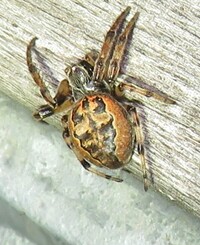 | Recorded by: Brian Bockhahn
Macon Co.
Comment: | 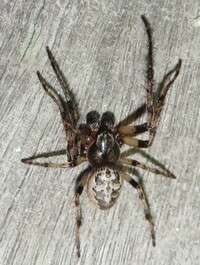 | Recorded by: Brian Bockhahn
Macon Co.
Comment: |
 | Recorded by: Mark Basinger
Wilson Co.
Comment: Large beautiful female. |  | Recorded by: Mark Basinger
Wilson Co.
Comment: Large beautiful female. |
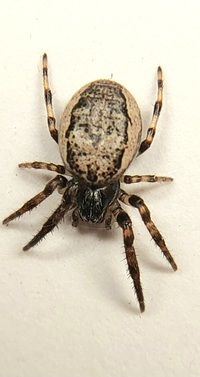 | Recorded by: Mark Basinger
Chatham Co.
Comment: | 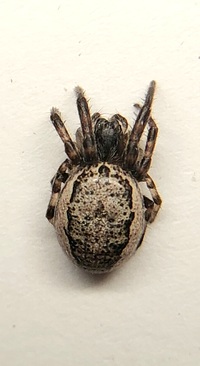 | Recorded by: Mark Basinger
Chatham Co.
Comment: |
 | Recorded by: Mark Basinger
Chatham Co.
Comment: |  | Recorded by: Tim Lacey
Perquimans Co.
Comment: |
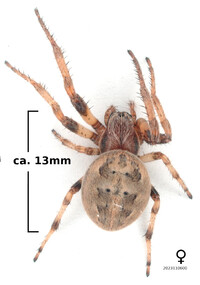 | Recorded by: Mark BASINGER & Donald ZEPP
Edgecombe Co.
Comment: Beaten from tree branches |  | Recorded by: Brian Bockhahn
Rutherford Co.
Comment: |
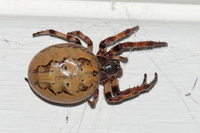 | Recorded by: Travis McLain
Cabarrus Co.
Comment: https://www.inaturalist.org/observations/177452473 | 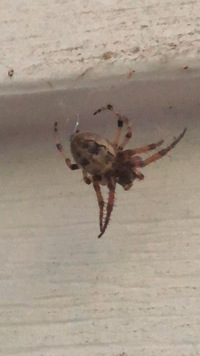 | Recorded by: Brian Bockhahn
Orange Co.
Comment: |
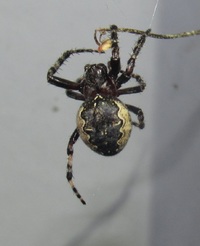 | Recorded by: Brian Bockhahn
Avery Co.
Comment: |  | Recorded by: David George, Stephen Dunn
Orange Co.
Comment: |
 | Recorded by: Donald Zepp
Johnston Co.
Comment: On fence along Smithfield's Neuse Riverwalk |  | Recorded by: Donald Zepp
Pamlico Co.
Comment: Web on front of RV. In situ photos only. |
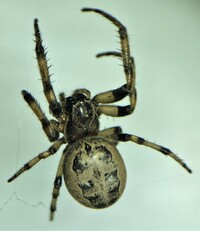 | Recorded by: Dean Furbish
Wake Co.
Comment: | 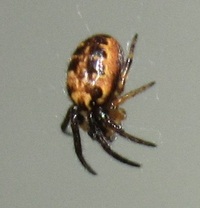 | Recorded by: Brian Bockhahn
Wake Co.
Comment: |
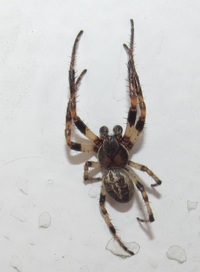 | Recorded by: Brian Bockhahn
Wilkes Co.
Comment: 1 male, 1 female | 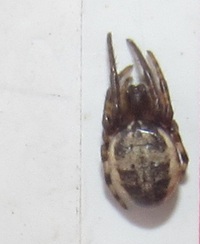 | Recorded by: Brian Bockhahn
Wilkes Co.
Comment: 1 male, 1 female |
 | Recorded by: K. Bischof
Transylvania Co.
Comment: GORG - Obs. VC. | 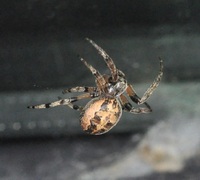 | Recorded by: K. Bischof
Transylvania Co.
Comment: GORG - Obs. VC. Female. |
 | Recorded by: Vin Stanton
Buncombe Co.
Comment: at night, near porch light for mothing | 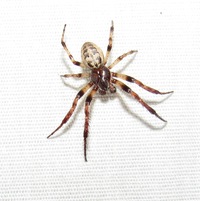 | Recorded by: Brian Bockhahn
Stokes Co.
Comment: |
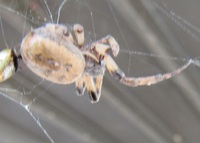 | Recorded by: Brian Bockhahn
Orange Co.
Comment: | 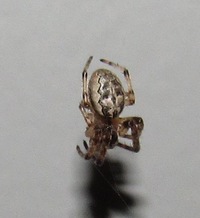 | Recorded by: Brian Bockhahn
Stanly Co.
Comment: |
 | Recorded by: Brian Bockhahn
Warren Co.
Comment: | 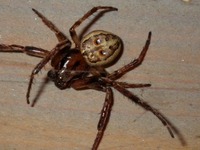 | Recorded by: j.wyche
Gates Co.
Comment: MEMI - on visitor center; a male that seems like it was dead or dying |
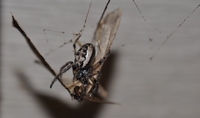 | Recorded by: K. Bischof
Transylvania Co.
Comment: GORG - Obs. Frozen Creek Ranger Residence. Female. Feeding on a moth, Canadian Melanolophia - Melanolophia canadaria. | 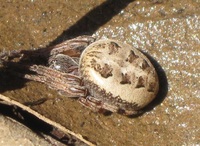 | Recorded by: Brian Bockhahn
Surry Co.
Comment: |
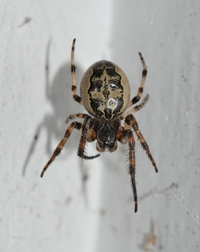 | Recorded by: K. Bischof
Transylvania Co.
Comment: GORG - Obs. at Frozen Creek Residence. 4 males, 4 females. | 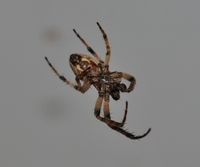 | Recorded by: K. Bischof
Transylvania Co.
Comment: GORG - Obs. at Frozen Creek Residence. 4 males, 4 females. |
 | Recorded by: j. wyche
Gates Co.
Comment: MEMI - on back of visitor center | 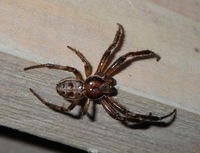 | Recorded by: j. wyche
Gates Co.
Comment: MEMI - on back of visitor center |
 | Recorded by: Brian Bockhahn
Rockingham Co.
Comment: | 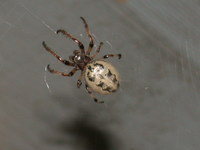 | Recorded by: Brian Bockhahn
Wake Co.
Comment: |
|